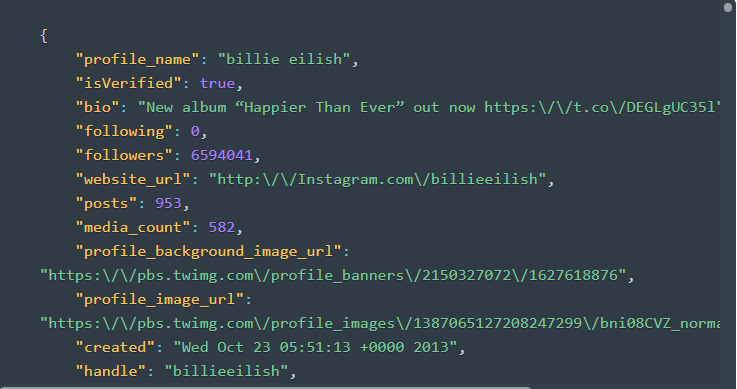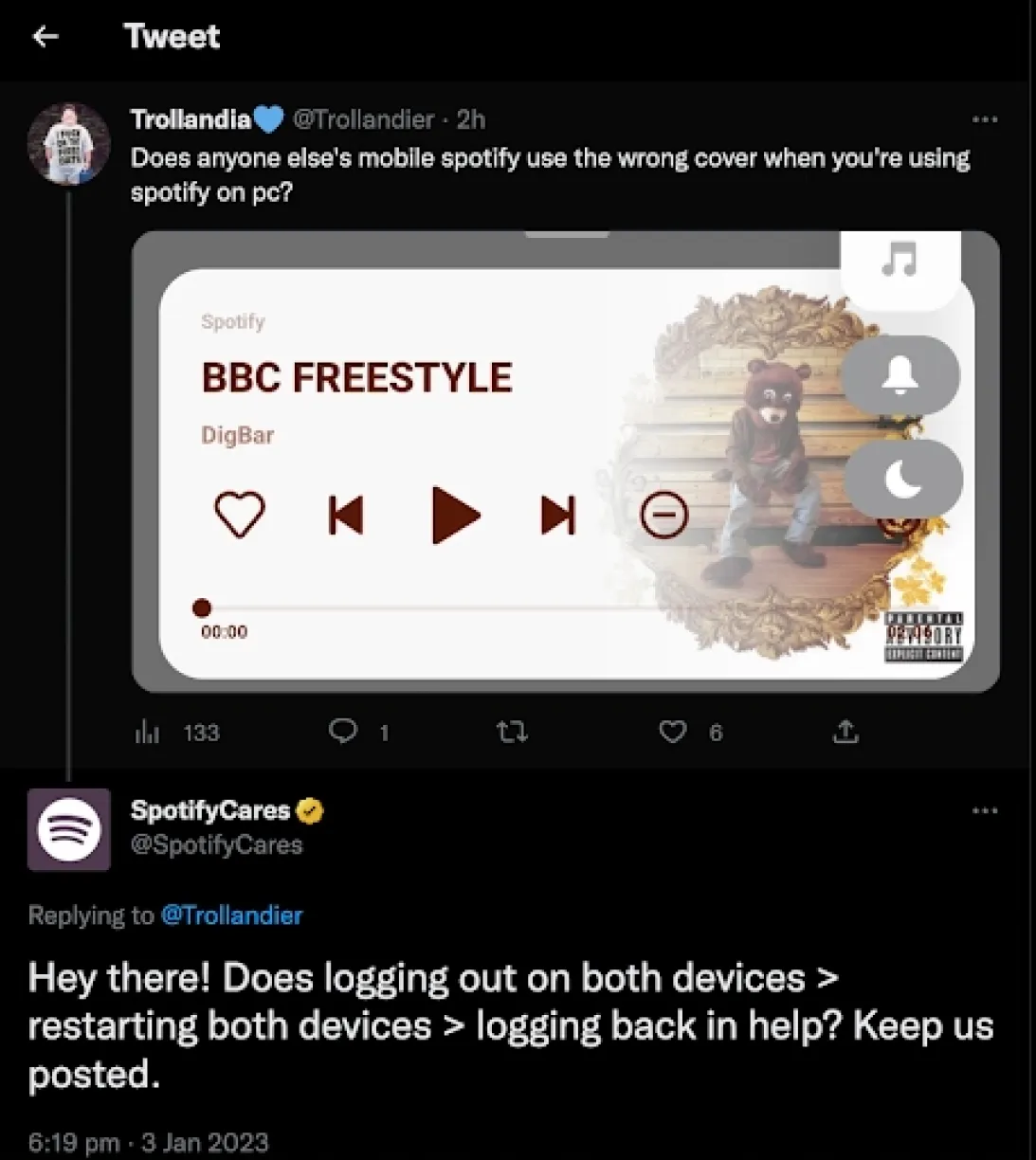There are different approaches to collecting data from social media platforms:
- Social media scraper APIs: Built-in anti scraping solutions and pre-configured scripts.
- Official social media APIs: Data access in compliance with platform terms of service.
- Python scraping libraries + social media proxies: Flexible web scraping but require managing bot detection systems.
- Pre-made social media datasets: No need to set up data collection pipelines but may lack frequent updates.
Evaluate the performance of leading social media scraper APIs across various platforms and compare the options based on their pricing structures.
The best social media scraper APIs of 2025
| Vendors | Type | Pricing/m* | Free trial | Pay-as-you-go |
|---|---|---|---|---|
| Bright Data | API | $500 | 7 days | ✅ |
| Zyte | API | $100 | $5 free usage | ✅ |
| Apify | API | $49 | $5 free usage | ✅ |
| Nimble | API | $150 | 7 days | ❌ |
| Smartproxy | API | $50 | 7 days | ❌ |
| Octoparse | No-code | $99 | 14 days | ❌ |
| ScraperAPI | API | $49 | 7 days | ❌ |
| Diffbot | API | $299 | 14 days | ❌ |
* Monthly price for the lowest priced package
Social media scraping calculator for LinkedIn, Twitter, TikTok, and Instagram
The following tool calculates the pricing for each social media platform and provides an estimate for each vendor based on your input.
We focused on the monthly rates, excluding any options that offer annual discounts. The pricing chart only includes data for those with a success rate exceeding 50%. Providers are compensated based on successful outcomes.
1. Social media scraper APIs
These APIs are the best solution for developers that want to reach social media data at scale.
Social media scraper API providers offer a range of pre-built templates designed for major social media platforms. These solutions are primarily no-code or low-code, allowing users to scrape popular platforms using ready-to-use templates or scripts. However, they offer less customization compared to custom-built scrapers.
One significant advantage of social media scraping API is that users don’t need to deal with anti-scraping measures or proxy management, as these tools often include features like proxy handling and CAPTCHA-solving solutions.
They provide an interface with pre-configured scripts. Users simply input details such as the target URL, query, and preferred file format, and the tool generates the code tailored to their specific scraping requirements.
Social media scraping API benchmark
See the social media APIs that each web data infrastructure provider offers:
| Page type | Bright Data | Apify | Smartproxy | NetNut | Oxylabs | Zyte |
|---|---|---|---|---|---|---|
| Facebook group | ✅ | ✅ | ❌ | ❌ | ❌ | ❌ |
| Facebook post | ✅ | ✅ | ❌ | ❌ | ❌ | ❌ |
| Instagram post | ✅ | ✅ | ✅ | ❌ | ❌ | ❌ |
| Instagram profile | ✅ | ✅ | ✅ | ❌ | ❌ | ❌ |
| LinkedIn post | ✅ | ❌*** | ❌ | ❌ | ❌ | ❌ |
| LinkedIn profile | ✅ | ✅ | ❌ | ✅ | ❌ | ❌ |
| TikTok post | ✅ | ❌** | ✅ | ❌ | ❌ | ❌ |
| TikTok profile | ✅ | ✅ | ❌ | ❌ | ❌ | ❌ |
| TikTok search | ✅ | ❌** | ❌ | ❌ | ❌ | ❌ |
| X.com post | ✅ | ✅ | ❌ | ❌ | ❌ | ❌ |
| X.com profile | ✅ | ✅ | ❌ | ❌ | ❌ | ❌ |
** These scrapers exist but their success rate was below our threshold (>90%).
*** Requires cookies. Other providers did not have this requirement. We excluded this scraper from testing since we completed all our web scraping tests without cookies
See methodology for more.
2. Official social media APIs
This is the ideal approach to access user data for businesses owning popular social media apps.
Most social media platforms, including the Facebook Graph API and X API, offer official APIs that allow developers to programmatically access their data. These APIs provide a dependable means of integrating with social media services.
However, these APIs
- Are built for app developers so they can access the data of their users who downloaded and authorized their app.
- Have certain limitations, such as restrictions on the number of API calls per application or user, as well as daily usage quotas.
Learn more about creating and using the official Instagram API for social media data extraction.
3. Python scraping libraries + social media proxies
Custom-built scrapers are usually created using one or more scraping libraries. They are a good solution for developers that have experience with building custom scraping solutions.
You can build a social media scraping tool with various Python programming languages, such as:
- BeautifulSoup: Parses HTML and XML documents, allowing users to navigate, search, and modify the parse tree.
- Requests: Ideal for making HTTP requests.
- Scrapy: Suitable for large and complex scraping tasks.
4. Pre-made social media datasets
Datasets require no technical info and are the ideal solution for business users or businesses that lack technical expertise.
Some web scraping service providers offer ready-to-use social media datasets, eliminating the need for manual data collection. These datasets are sourced from public information on social media sites like Twitter, Facebook, Instagram, and LinkedIn, covering both business and personal accounts.
They typically include data such as followers and hashtags, which can be tailored to your specific needs. Customization options may include applying filters based on criteria like location, date, or other parameters to suit your use case.
What is social media scraping?
Social media scraping is the process of automatically extracting data from social media platforms using automated web scraping solutions. The scraped data can include user profiles, posts, hashtags, comments, and other publicly available content.
Legality and types of data extractable from social networks
Scraping publicly available data is legal; there are no laws or regulations prohibiting it. However, this doesn’t imply that you can scrape everything. Private information and copyrighted content are both protected by law. If you intend to scrape private data you should read the General Data Protection Regulation (GDPR).1
Scraping Facebook data is legal under certain conditions. However, scraping private content without permission or selling it to third parties for profit without user consent is strictly prohibited.
Publicly available information that can be legally scraped includes:
- Profiles: Data such as usernames, profile URLs, profile photo URLs, follower and following counts, likes, and interests.
- Posts: Details such as the date, location, number of likes, views, comments, text, and media URLs.
X.com
X ,formerly known as Twitter, is a valuable source of data for tracking brand sentiment and measuring customer satisfaction. X’s APIs allow businesses free access to certain data. To use the API, you must first register.
The key advantage of using the API is that it is officially supported by X, eliminating concerns about being blocked if data is retrieved in compliance with their API rules. However, the API has usage limits, such as the ability to scrape only 18,000 tweets per 15-minute interval.
Scraping publicly accessible Twitter data is generally legal. However, it is essential to review the website’s robots.txt file, which specifies whether certain content is crawlable. The types of data you can collect from Twitter include:
- Keywords/Hashtags: Extract useful data by searching for brand-specific, location-based, or audience-targeted hashtags.
- Tweets: Retrieve lists of all tweets from specified profiles.
- Profiles: Gather public account information, such as bios, follower and following counts, and other publicly visible details.
Figure 1: It is the output of “https://twitter.com/billieeilish” URL scraped by using Twitter (X) scraper API.

Source: Bright Data
YouTube
It is legal to scrape data from YouTube so long as you do not interfere with the website’s operations and do not collect personally identifiable information (PII).
The data listed below can be extracted from YouTube:
- Video title and description
- Comments on videos
- Video ID
- Number of views and likes
Instagram APIs gives businesses and professionals access to their posts and comments on them. You can automatically extract public data from Instagram profiles and hashtags.
- Profiles: scraper bot extracts information such as posts, followers & following, and external URLs.
- Comments: Post date, post date, post URL, comments, likes.
- Hashtags: Post URL, media URL, post author ID.
Top 3 business benefits of leveraging social media data scraping
1. Adopt a customer-centric strategy
In today’s dynamic business environment, companies must prioritize customer-centricity, and having access to real-time, dynamic data is key to achieving this. Social media data scraping offers businesses a wealth of continuously updated information about individuals, enabling them to better understand their customers’ evolving preferences, expectations, and pain points.
Social media platforms are treasure troves of customer insights, where users share opinions, reviews, complaints, and desires regarding products and services. By using web scraping tools, businesses can systematically collect this data from social networks and review sites, facilitating an organic and customer-focused approach to product development and service improvement.
Case in point: Spotify’s dedicated Twitter account, SpotifyCares, exemplifies this strategy. By monitoring tweets related to its brand, Spotify harnesses X (Twitter) data to:
- Gain deeper insights into customer concerns and expectations.
- Identify common questions and feedback about its services.
- Build relationships with potential customers through proactive engagement.
- Enhance its customer service and refine its social listening strategy.
This real-time feedback loop allows Spotify to stay responsive, improve user satisfaction, and maintain a strong customer connection.
Figure 2: Example of customer interaction on Twitter

2. Stay updated on rends
Market dynamics can significantly influence customer expectations for your products and services. To stay ahead, it’s essential to gather current market data to understand customer preferences. Platforms like social media, blogs, wikis, and competitor websites offer valuable insights into industry trends and rival performance.
For example, analyzing customer feedback on competitors’ products can reveal successful strategies. Social media scraping tools can automate data extraction, providing structured insights for analysis. This helps businesses refine their strategies and adapt to emerging trends.
Case in point:
Brandwatch leveraged Twitter data for social listening and keyword tracking to assist Co-op, a major UK food retailer, with its Twitter campaigns.2
Co-op faced challenges in gaining:
- Real-time social insights
- Effective campaign tracking
- Ensuring campaign success
By utilizing Twitter data, Brandwatch provided real-time insights into brand mentions and competitive trends. This approach led to the campaign reaching 23.5 million people and generating 75 million impressions.
3. Perform sentiment analysis
Social media websites provide valuable insights into how brands are perceived by identifying positive or negative language associated with their products and services. For example, you can use social media scrapers to gather a set number of tweets containing specific keywords or hashtags related to your brand.
Twitter’s API offers access to various types of data, including tweets, media, and user statistics. Once collected, this data can be analyzed to determine the overall sentiment—negative, neutral, or positive—toward your brand. However, it’s essential to account for fake reviews and bot-generated content to ensure data accuracy and reliability.
Case in point:
Mathison, a platform focused on diversity, equity, and inclusion (DEI) in hiring, uses data-driven methods to enhance recruitment. The company builds unified talent pools by collecting candidate information from sources like LinkedIn and other recruitment websites.
By leveraging Bright Data’s social media scraper, Mathison efficiently gathered large volumes of publicly available candidate data, streamlining the process and saving significant time compared to manual collection methods.
Benchmark methodology
1,100 URLs in total from the 5 major social media domains. For each domain, we included 100 URLs from each type of page:
- x.com profile and post
- tiktok.com profile, post and discover
- linkedin.com profile and post
- instagram.com profile and post
- facebook.com post and group
During our work, we did not login to any of these websites and scraped only publicly available data. Any PII identified in results was deleted after they were downloaded.
For parts of our methodology that every web scraping API followed, see our benchmark on web scraping APIs.


Comments
Your email address will not be published. All fields are required.